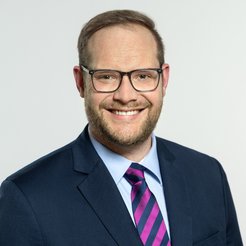“What’s done in the lab is often in sharp contrast to the real world“
"Light for health and well-being" was the title under which Prof. Dr. Manuel Spitschan (Max Planck Institute for Biological Cybernetics/TU Munich) brought together 20 international experts for a "Ladenburg Roundtable" from April 14 to 16, 2024. This conference format of the Daimler and Benz Foundation offers room for reflection on scientifically and socially relevant research topics. We spoke with Spitschan about light exposure, its consequences for health and society, research desiderata, and the importance of successful science communication.

The Ladenburg Roundtable on “Light for Health and Well-Being“ brought together experts from various fields of research. What was this interdisciplinary exchange about?
We know from a number of clinical studies in neuroscience that light has an effect on people. For example, light in the evening suppresses the secretion of melatonin and sets the internal clock. Such effects are very well documented. Recently, in 2022, this knowledge has found its way into the first international consensus recommendations on light exposure. But of course, this raises some questions: are these recommended values correct? After all, what’s is done in the lab is often in sharp contrast to what we observe in the real world and to the light conditions we are exposed to.
In what exactly does this discrepancy consist?
In the laboratory, I can isolate effects and tease out a result. But under natural conditions –conditions under which people live in the real world – our physiology is not as isolated as in the lab. The exposure to light is not controlled, and other factors also influence the internal clock; for example, food intake takes place at different times. This raises the question where we’re at when it comes to applying our knowledge; say, to create guidelines or laws. The goal of the Ladenburg Roundtable was to initiate this discussion: What’s still lacking? Where do we need more research?
Do we know enough about the lighting needs of different population subgroups, such as children, the elderly, or people of different sexes?
We already know that the need for light differs between men and women and also between different ethnicities. But this cannot be translated into individual recommendations yet; for that, we would first need large-scale cohort studies.
Where do you see a societal need for action?

Two main points: Firstly, we need to communicate more and bring about broad awareness of the internal clock and its health implications. Secondly, we have to find out who would benefit most from improvements. For example, how can we optimize the lighting conditions of shift workers? In general, light at the workplace is an important issue; after all, we spend a lot of time there. The existing occupational health and safety guidelines are usually focused on whether the lighting conditions are suitable for carrying out the tasks; they ignore the effects on the internal clock, which often occur only later. Beyond that, it is worth taking a look at retirement homes and hospitals; for example, data show that alternating light and dark in intensive care units favors recovery. And let’s not forget about schools either: light is important for healthy eye development.
Is it possible to estimate the social impact of wrong light exposure?
For this we would need large-scale studies that measure people's exposure to light in their everyday lives and its effects. One difficulty is that light pollution often comes together with noise and air pollution; therefore, it is hard to gauge which health issues are indeed attributable to incorrect light exposure on the basis of the currently available data. That being said, we also need health economic analyses, for example assessing the costs incurred by employers and health insurance companies.
What needs to be done to ensure that we harness the already existing knowledge about light exposure?
The Ladenburg Roundtable extensively discussed impactful science communication strategies, and we have already published a white paper: How can we most effectively disseminate our messages and get them into the curricula? How do we make the complex underlying biological mechanisms accessible to the different stakeholders? Which multiplier groups can help with this? One difficulty is that science is self-correcting and always generates new knowledge; we need to revise the communication accordingly. Some specific topics, such as cell phone light in the evening, already receive a lot of public attention, but there is still room for improvement in terms of awareness of light exposure. One thing is certain: this will be a long-term project.

